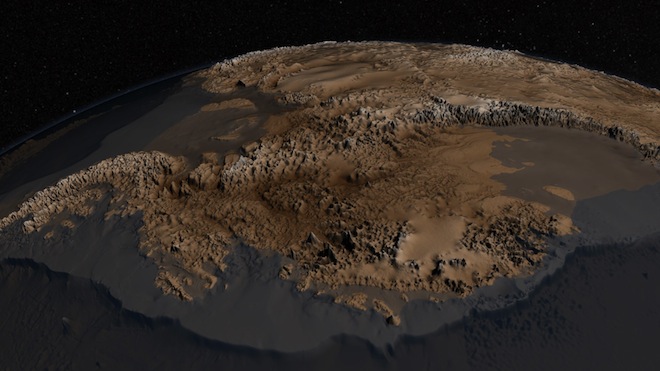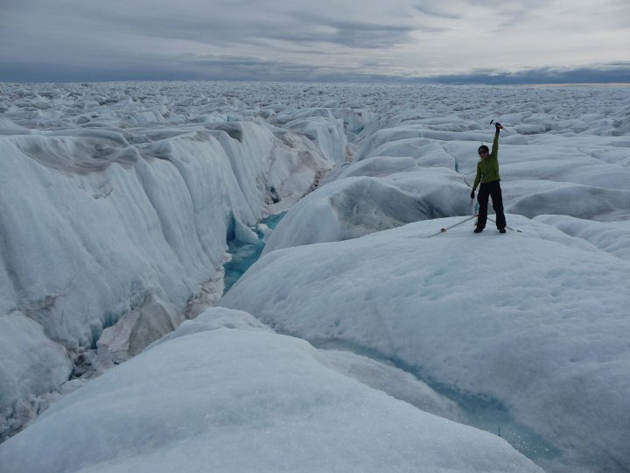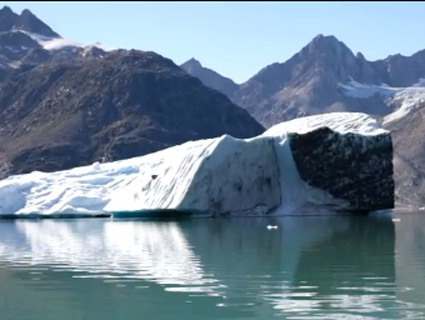This story first appeared on the Wired website and is reproduced here as part of the Climate Desk collaboration.
Check out the most detailed map of a continent never truly seen by human eyes: the de-iced surface of Antarctica. By virtually peeling back the frozen ice sheet and studying the land beneath, researchers can get a better sense of how the southern pole of our planet could react to climate change.
Bedmap2 was created by the British Antarctic Survey, and used decades of data to produce this detailed view of the frozen continent. NASA’s contribution to the dataset includes surface measurements from its now-retired orbiting Ice, Cloud, and Land Elevation Satellite (ICESat), and results from several years of flyovers by specialized aircraft that collected radar and other data measuring changes in the thickness of sea ice, glaciers, and ice sheets as part of Operation IceBridge.
The work improves on the decade-old Bedmap project, which virtually thawed the continent, but at lower resolution. Both maps combine information on ice thickness, bedrock topography, and surface elevation. Bedmap2 added millions of extra data points and also covers a wider swath of land than its predecessor. Over on NASA’s site, you can compare the two datasets by sliding between them.
Researchers need good information about the under-ice ground of Antarctica to better simulate its response to changing environmental conditions. Antarctica’s ice is not static but constantly flows to the sea. Knowing the shape of the bedrock and the thickness of the ice allows scientists to model these movements and predict how they could change in the future.












